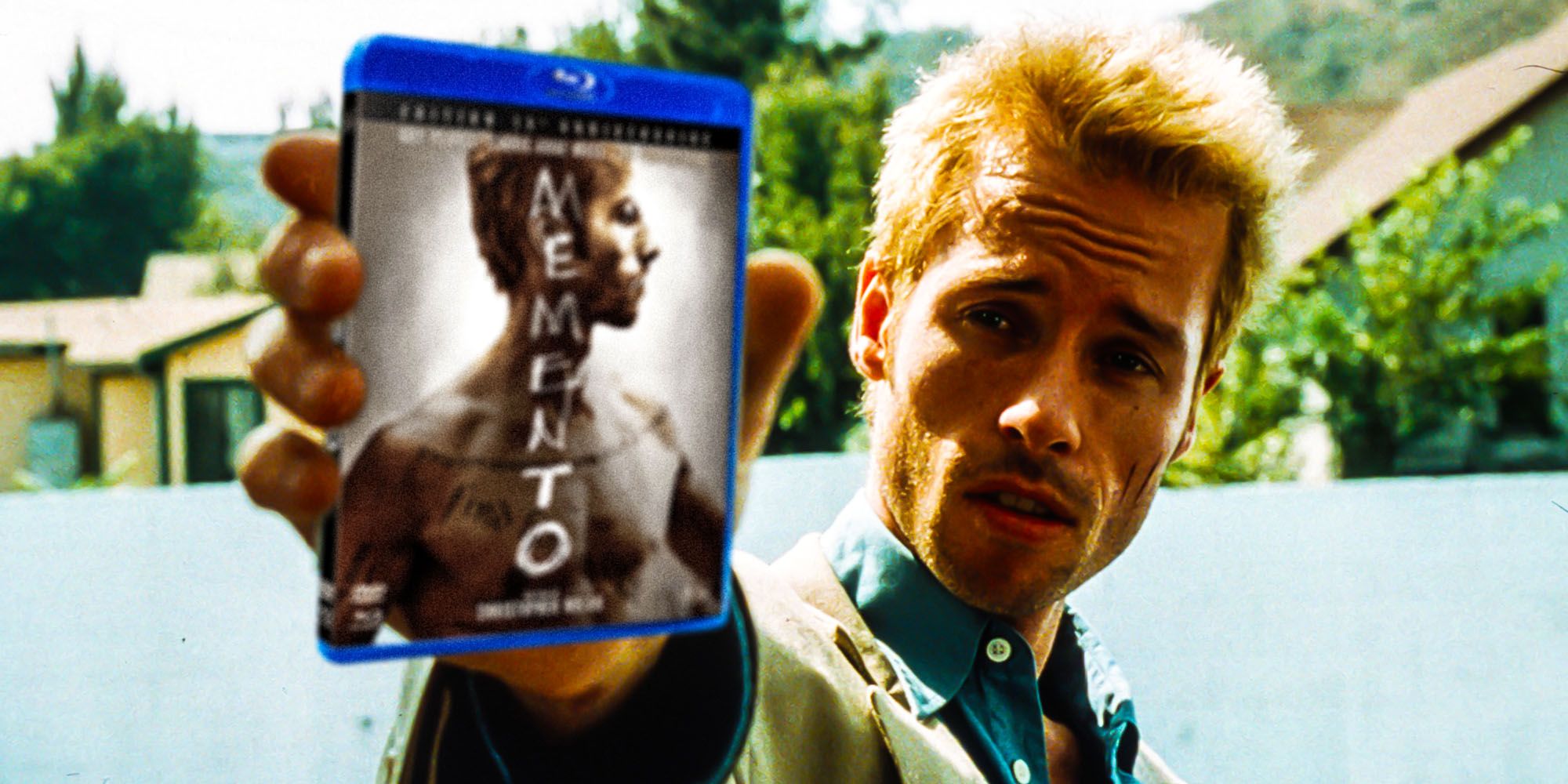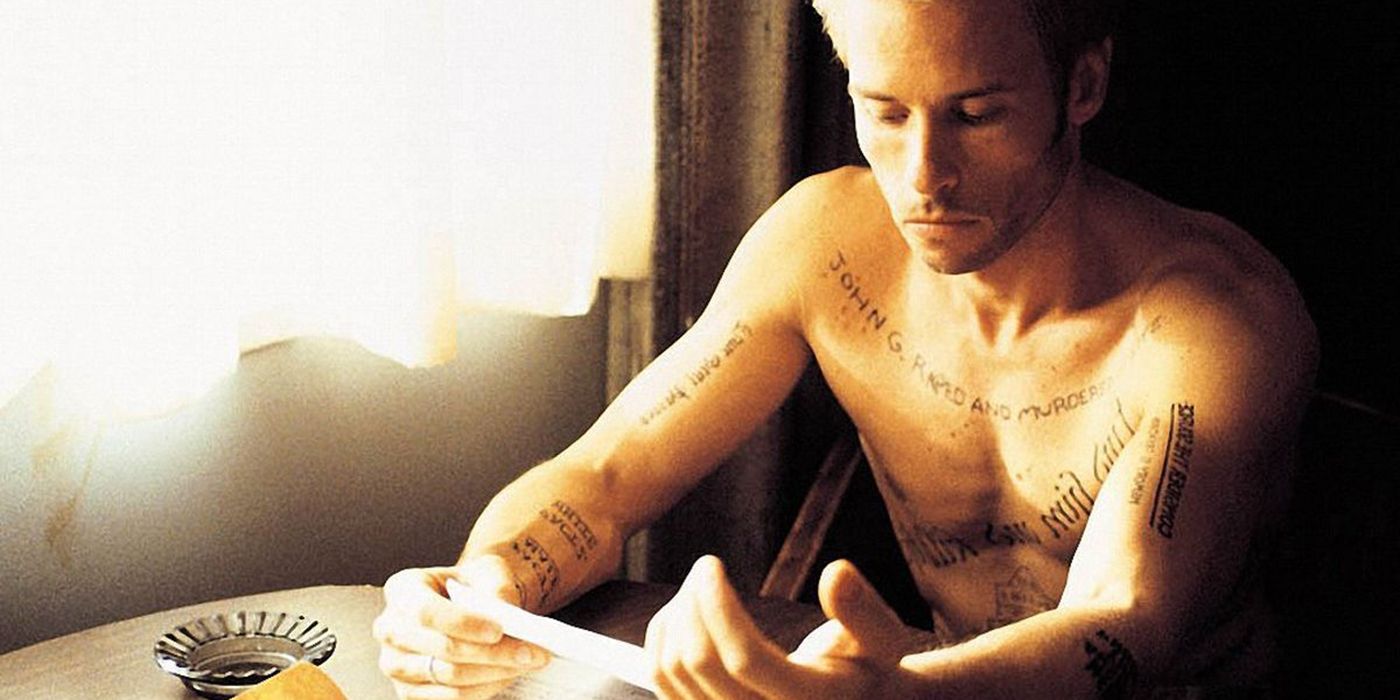
Christopher Nolan's Memento is revered for its non-chronological structure, but a Blu-ray extra feature lets you watch the film in chronological order. Memento was only Nolan's second film, and the experimental director was still years away from the mainstream success that would come from Hollywood blockbusters like Batman Begins and Inception. However, classic Nolan trademarks like non-linear plot progression, the relationship between memory and personality, and an individual's reaction to trauma can all be traced back to Memento, which is similar to Fincher's Fight Club.
On its surface, the film seems to tell a relatively standard revenge story of a man seeking the murderer who killed his wife and robbed him of his memories. However, as with any Christopher Nolan movie, a unique structure and brave filmmaking choices make Memento the farthest thing from an average revenge thriller. Instead of progressing from beginning to end in a straight line, the film instead relays the events to the audience via two different alternating timelines differentiated by their use of color. The film's color sequences begin at the end of the story and run backwards toward the middle of the plot, and the film's black-and-white scenes run forward, resulting in a film that meets itself in the middle. In a similar way to how Nolan would manipulate time in 2019's war movie Dunkirk, this non-standard structure is used to heighten the drama. It also has the effect of telling the story in much the same way the film's protagonist, Leonard, perceives it: in disorganized, scattered fragments.
But what if these fragments weren't out of order? Many fans of the movie have wondered what the experience of watching it would be like if all the scenes were presented chronologically. As it turns out, a cut of the film presented in this way does exist. Many of Memento's Blu-ray releases feature a hidden bonus feature called "The Beginning of the End," which is actually the entire movie reorganized into a more traditional, linear narrative. This extra feature offers a unique and fascinating look at what a "correct" version of the movie looks like, and provides audiences an enlightening — and surprisingly dark — alternate version of this most unorthodox film.

The chronologically organized version of this early Christopher Nolan movie is constructed by placing the film's black-and-white sequences at the beginning of the film, and then reversing the order of the color sequences and placing them after the black-and-white scenes. The end result is a cut of the film that begins with Leonard setting out to hunt down John G., the man who killed his wife. However, watching this version of events unfold quickly shows the audience how broken and obsessed Leonard is. It's apparent almost from the beginning that he's already using his short-term memory loss as a way to continue living out a fantasy, and that each new sequence represents a cycle that's being repeated on loop.
Reorganizing Nolan's high-concept movie in this manner strips away one of the original cut's strongest aspects: its subjective viewpoint. As Leonard progresses non-linearly through the story, so does the audience, allowing viewers to see the film's events through Leonard's eyes. With the scenes put into chronological order, that subjectivity is removed and replaced with objectivity, allowing viewers to experience events as they really are, not how Leonard sees them. Characters who seemed cruel in the original version suddenly seem sympathetic, and vice versa. Leonard's willingness to forget the past and invent his own facts becomes a known constant throughout the story and takes on a new, disturbing dimension. In the end, the definitive and correct version of Memento will always be the original, non-linear version, but for fans who've always wondered what the film would be like with a more traditional structure, the chronological version is absolutely worth watching and appreciating.
from ScreenRant - Feed https://ift.tt/3fw10cI

No comments: